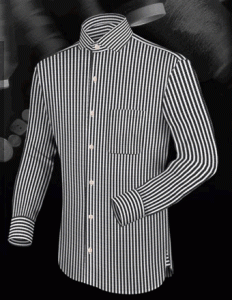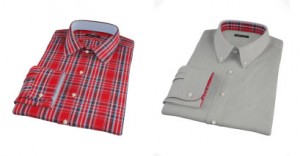One Size Doesn’t Fit All: Why Custom Style Succeeds By Breaking Mass Fashion’s Rules
If you’ve ever dealt with shirt sleeves that were a little too short, or settled on a dress that was a little too tight, custom made or custom tailored clothing is an option worth exploring. Thanks to the internet, what was once an option only for the wealthy is finding its way into the mass market.
Chocolate, and even designer sunglasses are hopping on the bespoke bandwagon, but custom clothing has the greatest potential to disrupt the normal fashion cycle. Custom clothing certainly isn’t anything new – it dominated for centuries before ready to wear clothing became the standard. What is new is the speed and price at which custom clothing can be produced, seemingly by tossing out the rules of mass apparel production.
A custom shirt won’t arrive as quickly as one in stock on your favorite department store’s website, but the 2 to 3 week delivery time offered by custom shirt makers like ProperCloth and Alfa is faster than the 8 to 10 weeks an off the rack shirt requires to go from design to delivery. eShakti, a website offering customized dresses and women’s clothing based on existing style templates, has reduced the timeframe to a week and a half. For women’s fashion, design to delivery in stores normally takes a year.
Bringing Down the Cost of Custom

Two fabric options from Alfa custom shirts. Prices range from $29 to $75
While a week and a half or 2 weeks may still not be quick enough for last minute shoppers, the competitive prices make custom clothing an attractive option for those who plan ahead. Patrick Kodjoe, CEO of Alfa, explains that technology and operating outside the traditional ready-to-wear fashion cycle is what allows his company to offer mass market prices on individually produced products.
“We have had to develop unique production processes and sophisticated software, driving down the cost while bringing efficiency and consistency to a traditionally manual industry,” Kodjoe says. “Basically, the biggest challenge is the garment pattern. The reason why ready made production is so much cheaper and easier is that you work with one pattern. With us, in addition to all the different options, every shirt has a different pattern created specifically according to the body measurements of each individual customer. Traditionally, primarily because of individual patterns and expertise needed, custom-tailoring is all manual, which explains the time investment in each piece and thus, the cost/price. Our software enables us to generate each shirt pattern separately with manual supervision, and coupled with our steamlined hand-production processes, this enables us to offer our revolutionary prices.” Perhaps equally important, “we generally stay away from traditional retail distribution and expensive marketing campaigns,” he explains.
Seph Skerritt, founder of ProperCloth, also attributes the relatively affordable prices of custom clothing to direct production and distribution. “The primary advantage is that, by making products to order, we avoid any costs associated with producing products that don’t end up being sold,” he says.

Two shirts from ProperCloth. Prices range from $99 to $200 with free shipping.
eShakti operates on a slightly different model. Shoppers can choose varied skirt shapes and lengths, different sleeve and neckline options in addition to specifying measurements, but do so based on an existing garment rather than designing something completely new. Still, the company has found a similar benefit in using the internet to bypass the traditional retail system. “The costs of production are indeed higher when you make individual garments separately – as much as two to three times higher than mass, assembly-line production. And when we courier separately to individuals, the costs are extremely high. We still keep our price reasonable since we do not have any buyers/retailers as middle-men and sell directly to the consumer,” says Jennifer Mayer, eShakti’s head of marketing.
One Size Does Not Fit All
Bringing prices and production in line with mass market clothing is a significant step in putting custom clothing in line to compete with off the rack clothing, but each person we spoke with emphasized that the biggest opportunity is in providing clothes that fit well.
